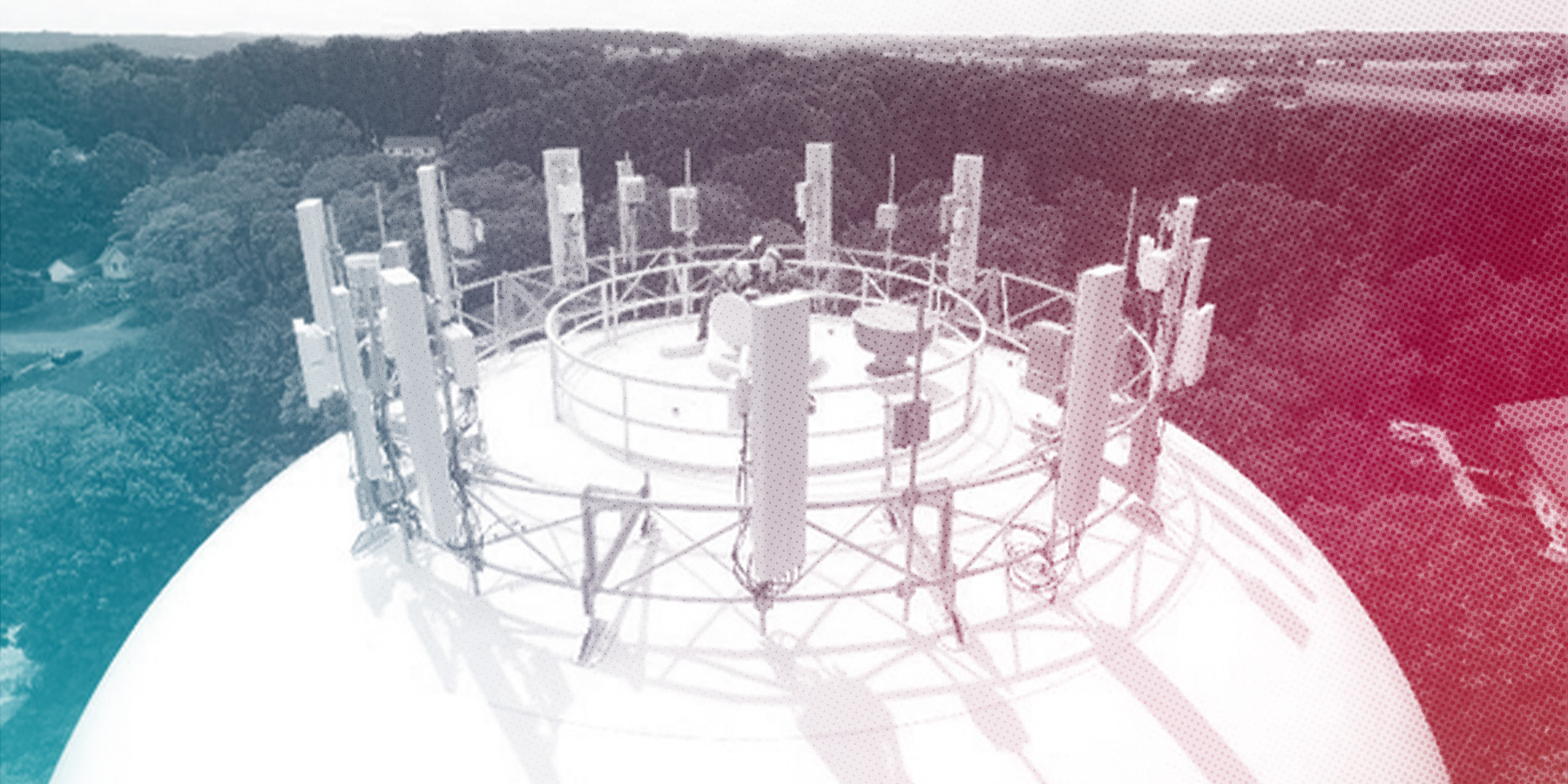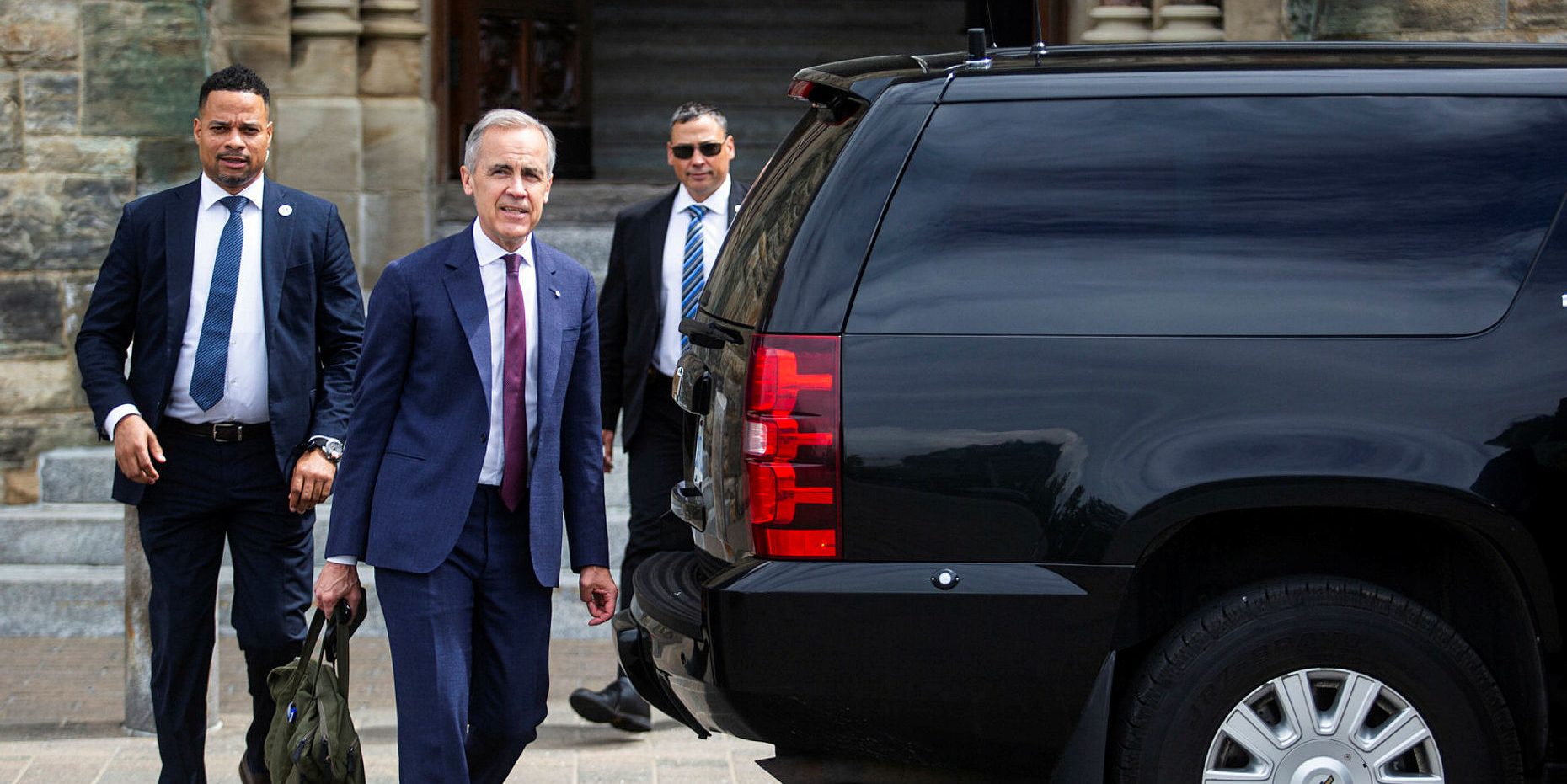
Wireless ISPs meet urban spectrum deadline, but face higher costs from looming rural transition
Regulatory | |May 1, 2025
While many wireless internet service providers successfully navigated the recent deadline imposed by the government to cease operating in urban areas on a band of spectrum previously reserved for them, the impacts of the transition have some worried about an upcoming deadline for rural and remote areas — and what that means for broadband connectivity in those regions.
The recent displacement stems from a May 2021 decision by Innovation, Science and Economic Development Canada (ISED) to repurpose the 3800 MHz spectrum band (3650-4200 MHz) — part of which was previously dedicated to fixed wireless broadband services (WBS) — to better support 5G technologies.
The department switched the band from a shared, all-come, all-served basis — meaning that multiple licensees could operate in the same geographic area without exclusive spectrum rights — to an exclusive, flexible use basis, which would include both fixed and mobile services. Spectrum licenses for the newly repurposed 3800 MHz band have since been auctioned off, netting the federal government approximately $2.2 billion.
Wireless internet service providers (WISPs) in the 3650-3700 MHz band were required to vacate it, forcing them to replace their equipment with gear suited for other spectrum bands that they will have to swap over to in order to maintain their services.
Those operating in Tier 5 urban service areas were given a deadline of March 31, 2025 to make the transition, while those in Tier 5 rural areas must do so by March 31, 2027.
ISED gave displaced WBS licensees the opportunity to apply for early access to spectrum in the 3900-3980 MHz band, but there has been little uptake among WISPs, according to industry groups. ISED announced Tuesday, April 29, that it will begin accepting general licence applications on May 14.
To make the 3900 MHz band more attractive for WBS operators, the Canadian Association of Wireless Internet Service Providers (CanWISP) and the British Columbia Broadband Association (BCBA) want ISED to change some of the rules around how it can be used.
According to representatives from the two groups, many of their members have relatively smaller footprints in urban areas compared to rural ones, and were able to transition to other bands in time. The looming 2027 deadline for rural areas, however, presents a much bigger threat to their operations.
“Our members are a little taken aback that ISED has taken this spectrum away from us,” said CanWISP interim executive director Neil Smellie in an interview with The Wire Report.
“ISED knew that the WBS [band] was well used by small providers and it was kind of puzzling that they didn’t really give us any option other than to replace our equipment.”
The costs of replacing the equipment have so far been expensive, he explained.
“A lot of our members have had to look at their expansion plans and pare those down, or cancel entirely, and take that money they normally use to expand into new areas or to upgrade existing services, to take care of this WBS urban problem,” said Smellie.
“All you’re doing is keeping a customer, which is…a good thing, but there’s really very little chance for any new revenues to come from this change in equipment,” he noted.
Looking ahead to the 2027 deadline for rural and remote areas, Smellie said he is worried for CanWISP members.
“Generally, our members don’t deploy over a fibre-deployed area, we deploy in more rural and remote areas,” he noted, “so the big impact for us is going to come in 2027, as that’s where the bulk of our members have service.”
Sell-off of small ISPs linked to spectrum decision and market pressures, says BCBA head
BCBA president Bob Allen argues that many providers have already been impacted by the spectrum decision, regardless of location.
“Many of the ISPs who had been operating successfully in the 3650 band realized that this would be very detrimental to their business and, consequently, … a number of them exited the business through sale to the incumbent telecoms,” said Allen in an interview with The Wire Report.
He said he observed a “significant sell-off of small, rural internet providers” in the years following ISED’s decision to repurpose the spectrum, stating that those ISPs “could see that their future was greatly diminished.”
The decision, combined with the arrival of satellite services such as Space Exploration Technologies Corp.’s (SpaceX) Starlink, and “massive amounts of [subsidies] spent on driving rural fibre,” put pressure on rural ISPs in the marketplace, Allen argues.
“They did have an exit opportunity,” he said, referring to smaller players’ acquisition by larger telcos, “and they didn’t have a very rosy future offered to them, because they were going to be forced to change out all their equipment without compensation.”
Since May 2021, many independent telecom companies have been acquired by larger players, though their exact reasons for selling are not immediately clear. In the months following ISED’s decision, Rogers Communications Inc. bought Seaside Communications; while in 2022, BCE Inc. purchased Ebox and Distributel, Telus Corp. bought Start.ca, Altima Telecom, and NETAGO, and Quebecor Inc. bought VMedia Inc.; 2023 saw Cogeco Inc. acquire Oxio, Eastlink acquire NeoTech, and Rogers acquire Comwave; and in 2024, Telus bought City Wide Communications through Altima.
ISED opens up alternative spectrum band, but new rules repel WISPs
ISED made the 3900-3980 MHz band available through the new non-competitive local (NCL) licensing framework. Through an early application window, displaced WISPs were allowed to acquire shared licenses for up to two 10 MHz blocks (granting maximum bandwidths of 20 MHz), within a given area, on a first-come, first-served basis. But the rules around using that spectrum band have made it unfeasible for many of the displaced WISPs.
“I’m not aware of any of our members that have gone to the new 3900 band and NCL,” said Smellie, noting that many who did not have spectrum licenses for other bands have moved to the unlicensed 5 GHz and 6 GHz bands instead.
Those higher spectrum bands allow for much faster internet speeds, he acknowledged, but they have less reach compared to the 3 GHz band and are at greater risk of interference because nothing is keeping one operator from using the same frequency as another.
Equipment used in the 3900-3980 MHz band is subject to a series of maximum power level and height restrictions that are much lower than those in similar bands; WISPs say this has both reduced the amount of equipment available to them, and made it more difficult for them to efficiently use the 20 MHz bandwidth available to them.
“There really isn’t an ecosystem that our members can move to,” said Smellie.
He acknowledged that there is some equipment available, however, “given the power levels and the restrictions in things like height, they’re really not solutions that an internet service provider would use to provide a modern day service.”
According to ISED’s technical requirements for WBS systems in the original 3650-3700 MHz band, fixed or base stations are limited to a maximum equivalent isotropically radiated power (EIRP) density of one watt/MHz — equivalent to 30 decibel-milliwatts (dBm)/MHz. However, in low-population areas, licensees are allowed a maximum EIRP of 60 W/MHz, or 47.8 dBm/MHz.

Explaining its reasoning at the time for lower power limits in the new 3900-3980 MHz band, the department cited risks of interference between high and low power systems, which it said could also reduce the number of available frequencies for licensees.
“The use cases requiring networks to operate over larger geographic areas in rural and remote regions could in general warrant a higher maximum power level. However, higher power levels present increased challenges with respect to interference mitigation between higher power systems and lower power systems. The corresponding reduced availability of frequencies could in turn reduce the areas available to new licensees,” it wrote in its May 2023 decision.
“In general, maximum permissible power limits for NCL licensing will be lower than typical values allowed for other licensing frameworks (e.g. auctioned commercial mobile bands), unless otherwise specified,” ISED wrote.
Similarly, lower antenna heights reduce the potential for signals to travel further and cause unwanted interference. But Smellie took issue with the limitations.
“If we had a member that was, say, on an elevated water tower in a small community, if they chose to replace their equipment for the new 3900 [MHz band], they wouldn’t be able to reinstall it on that elevated water tower to conform to the rules as written by ISED because it would be too high in the air,” he said.
“We need height to be able to make our equipment work. So having that height restriction and those power restrictions, [especially] in urban areas, has really hurt us.”
“Usually, what we see ISED doing is they generally follow the lead of our American friends,” Smellie stated, because Canada’s smaller market is not large enough to influence supply from equipment manufacturers. However, Smellie argues that ISED broke step and made licence conditions for the 3900-3980 MHz band that are unique to Canada, falling out of line with the standards of other regions.
Canadian NCL requirements ‘unique’ in global equipment ecosystem, say manufacturers
In a statement to The Wire Report, an ISED spokesperson said that “many countries” have been making spectrum in the 3.4-4.2 GHz band, or parts of it, available for flexible use on a shared or local access basis. It pointed to frameworks in the United States, United Kingdom, Germany, and France.
“ISED was of the view that the global equipment ecosystem for 5G devices was fairly mature and would continue to evolve as more use cases are still emerging,” the department stated. “There is equipment currently available for use in this spectrum in Canada. Over the past year, ISED has certified numerous types of devices for the 3900-3980 MHz band.”
It added that, “similar to other internationally standardized bands, ISED expects over time additional equipment will become available and equipment costs will continue to decline.”
While ISED’s 3900 MHz NCL licensing framework bears some similarities to the shared access frameworks of its international peers for other spectrum bands, its combined power, height, and bandwidth limits cause Canada to stand out from the rest.
Several WISPs and equipment manufacturers have argued that although there are devices certified for use in the 3900 MHz band, ISED’s combined restrictions force operators to choose from a smaller pool of less effective equipment to offer their wireless broadband services.
When ISED was developing the new deployment standards, equipment manufacturers including Ericsson AB, Fujitsu Ltd., Nokia Corp., and Qualcomm Inc. called for the power limits for certifying equipment in the 3900-3980 MHz band to be the same as those in the 3450-3900 MHz band.
“If certification is not aligned across the bands…then the equipment certification requirements for 3900-3980 MHz will result in unique Canadian requirements which will not be fully aligned with the global equipment ecosystem,” the companies wrote in a joint submission to ISED in July 2023.
“This will possibly result in a loss of economy of scale and consequently a higher cost for Canadian users and for NCL licensees (or carriers), and potentially even a lack of equipment for Canadian users and NCL licensees (or carriers).”
This lack of equipment, they continued, “will be further exacerbated as NCL spectrum users are in a niche market within the whole Canadian market, which is already small compared to the U.S. market and global market.”
The group highlighted that advanced antenna equipment, such as massive MIMO (Multiple-Input Multiple-Output) radios — which CanWISP says they must use to bring modern services to Canadians — need more power than ISED allows. Without this technology, network capacity will be limited and operation costs will increase, the manufacturers warned.

“There’s a fairly wide range of equipment that operates all the way up to 3980 [MHz],” said Ericsson customer solutions sales director Gabriel Lascut in an interview with The Wire Report.
He explained that there is a shared equipment ecosystem across North America, but “because of those very low maximum power limits that ISED has put in the standard, some of these radios cannot be used … so that reduces the range of products that can be deployed.”
Lascut noted that some of the other groups that ISED developed the NCL licensing framework for — such as small communities, schools, campuses, or factories — could still utilize the 3900 MHz band with other technologies, as they “will probably never go to something like a massive MIMO radio. They don’t have a need for that.”
WISPs, on the other hand, emphasize the restrictions’ impact on their ability to both compete in the internet market and support the country’s universal service objective of Canada-wide access to internet download speeds of 50 Mbps and upload speeds of 10 Mbps by 2030.
“It would be very difficult to provide 50/10 [Mbps], which is really a minimum these days, at any sort of scale using the equipment that is approved in the band,” said Smellie.
READ MORE:
— CanWISP worried ISED proposals will reduce rural connectivity
— Funding gaps, policy shortfalls keeping rural Canada offline, experts say
WISPs seek support from ISED, changes to deployment rules
Considering the expenses that Smellie said CanWISP members have faced in replacing their displaced 3650 MHz equipment, he called on ISED to help ease some of that burden.
“If we were provided with some sort of mechanism to recover our hard-sunk costs for replacing this equipment, that would go a long way to ensuring that everybody continues to have service.
“It would enable ISPs to continue to expand their networks to serve more people, rather than spending money on people that [risk] losing their service because of a government decision,” he continued.
ISED told The Wire Report that it considers the impact of spectrum reallocations on existing services, including displacement. “However, any displaced spectrum users will be responsible for all costs incurred as a result of any reallocation of spectrum by the department.”
Smellie also called on the department to revisit the technical limits of the 3900 MHz band. He urged the department to raise power limits to match those in the broader 3450-3900 MHz band, arguing it would give “new meaning to that spectrum, and it would become far more useful than it is now.”
Higher power and height limits should especially be considered for service areas that ISED has classified as urban, but which Smellie says are actually rural.
“You think of [an urban area] as a downtown proper in a small town, but if you look at, say, the Highway 11 corridor between Barrie and Orillia, [Ont.,] all of that farmland between those two towns is in an urban ISED tier, when it’s truly rural,” said Smellie.
The limited bandwidth available to licensees is another adjustment that ISED could make to the decision, Smellie added. He called on the department to increase the current 20 MHz cap on channel sizes “so that carriers can offer the high-speed packages common in urban markets.”
The BCBA echoed CanWISP’s pleas, with Allen calling for higher equipment power and height thresholds that would “allow small providers to use equipment approved for the rest of the 3 GHz band” and enable them to “reach rural customers and to be able to deploy massive MIMO beamforming equipment.”
Allen also wants to see increased bandwidths, proposing that licensees be given access to channel sizes of at least 40 MHz, so small providers “can deliver competitive service plans.”
ISED did not confirm to The Wire Report whether it will make any changes to the 3900 MHz band or the NCL licensing framework, but said in a statement that it will “monitor the demand for non-competitive local licences (NCLL) and intends to conduct a review of several elements of the rules for the 3900 MHz band within three years of NCL licences being issued.”
READ MORE ABOUT SPECTRUM IN CANADA:
— ISED launches consult on 26 GHz, 38 GHz spectrum bands
— Terrestar takes CRTC spectrum revenue decision to Federal Court of Appeal
— ISED hears further efforts needed in consultation on Indigenous Priority Window for spectrum
— ISED’s non-competitive licensing framework provides needed flexibility for regional players: expert
— ISED establishes fee structure for non-competitive local spectrum licences
— Rural, Indigenous, connectivity won’t improve by 2030 if Gov. keeps current goals in place: Report




